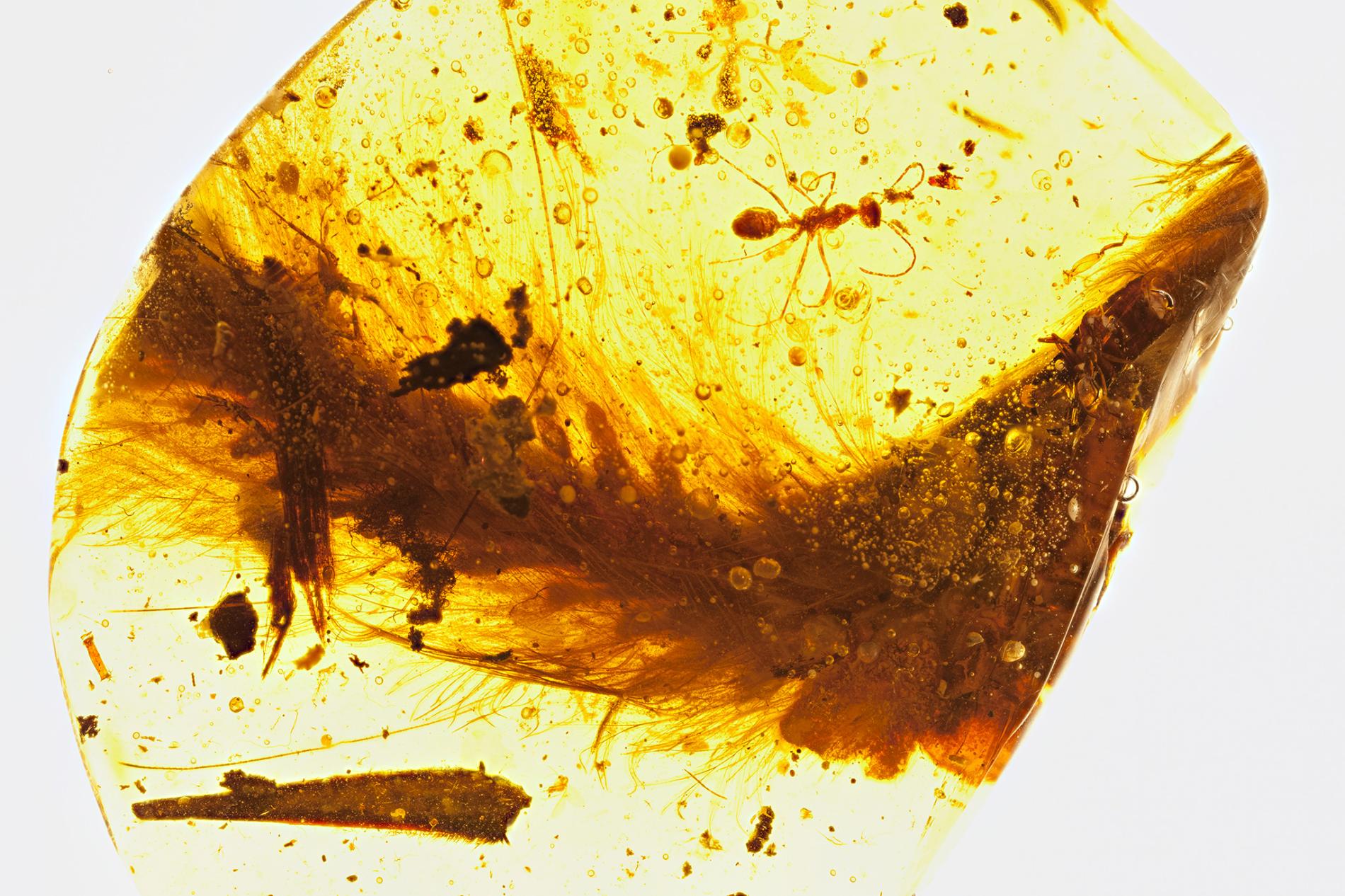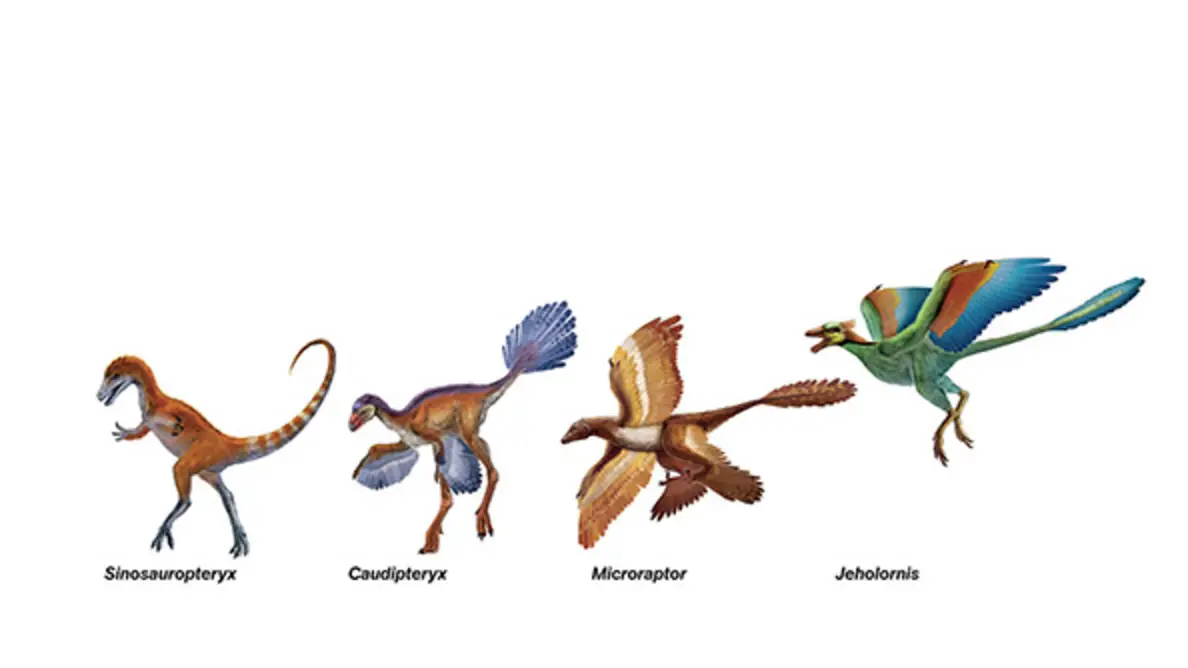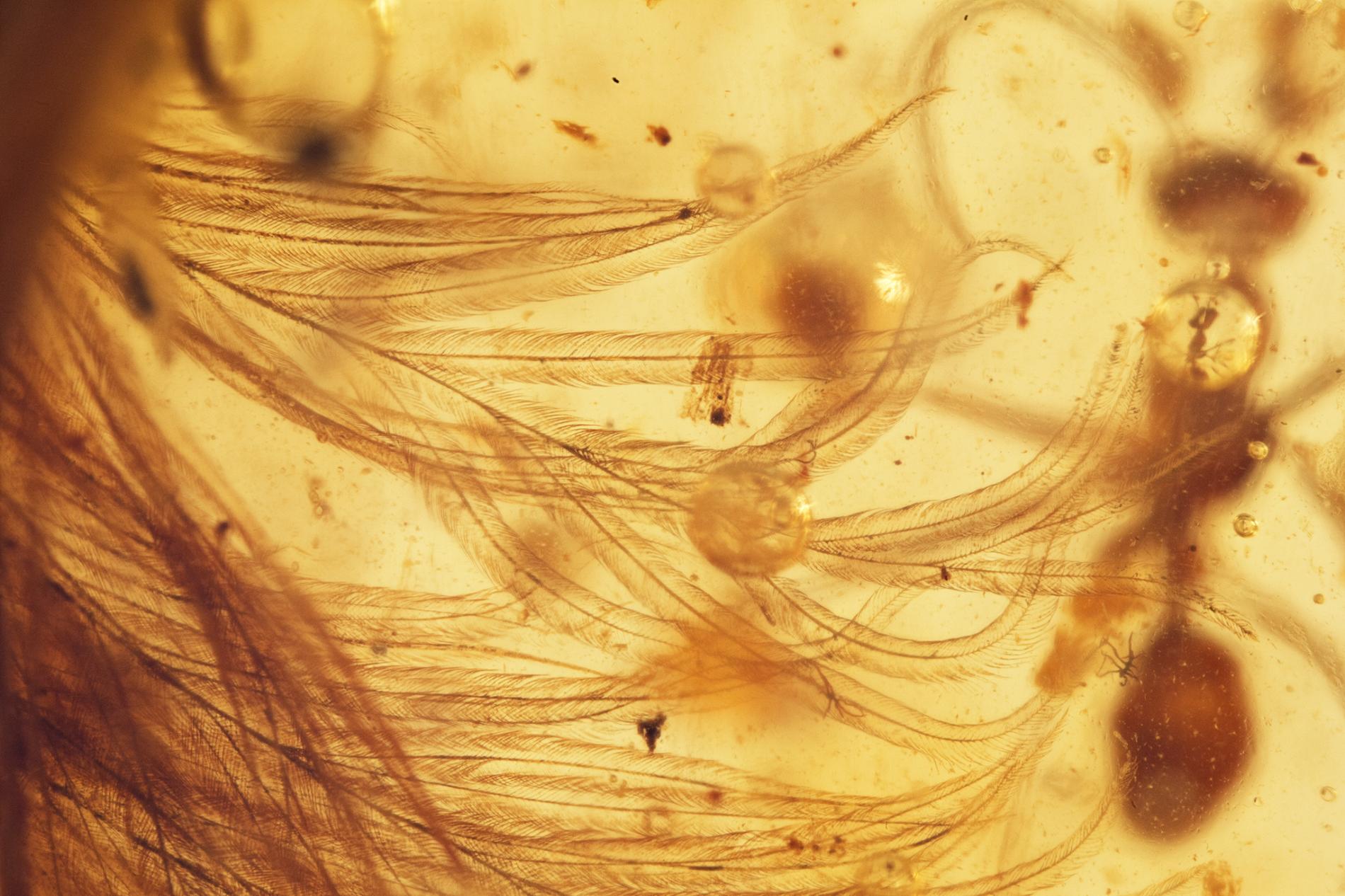News
99-Million-Year-Old Dinosaur Tail Covered in Feathers Found Perfectly Preserved

Scientists have just discovered the first-ever, completely preserved dinosaur tail – bones, soft tissue, and feathers, included — completely preserved in amber for the last 99-million years.

The research, led by paleontologist Lida Xing of the China University of Geosciences, was funded in part by the National Geographic Society’s Expeditions Council. The discovery was published in the journal Current Biology. It is the first of its kind to show that some dinosaurs had feather, other than the many fossilized impressions that scientists have had to use thus far to understand dinosaur evolution.

A segment from the feathered tail of a dinosaur that lived 99 million years ago is preserved in amber. A Cretaceous-era ant and plant debris were also trapped in the resin.
PHOTOGRAPH BY R.C. MCKELLAR, ROYAL SASKATCHEWAN MUSEUM
The section that was captured within the amber is small. What remains of a once-living creature is only a 1.4-inch limb.
The perfectly-preserved dinosaur section was unearthed from an amber mine in Hukawng Valley in Kachin state, northern Myanmar. Scientists have found that amber from this region contains some of the most interesting creatures from the Cretaceous period.

The amber sample, from a mine in Myanmar, had already been partially shaped into an oval by a jewelry maker. There is also an ant from this period in the sample. PHOTOGRAPH BY R.C> MCKELLAR, ROYAL SASKATCHEWAN MUSEUM

A micro-CT scan reveals the delicate feathers that cover the dinosaur tail.
PHOTOGRAPH BY LIDA XING
This particular amber sample was one of more than a dozen with significant inclusions that were collected by Xing and his research team in 2015 at a well-known amber market in Myitkyina, the capital of Kachin state. Two of the other samples contained the dinosaur-era bird wings also.

The dinosaur feather structure is open, flexible, and similar to modern ornamental feathers.
PHOTOGRAPH BY ROYAL SASKATCHEWAN MUSEUM
Scientists believe this sample contained a juvenile coelurosaur, part of a group of theropod dinosaurs that includes everything from the T-rex to modern birds. The way the tail is articulated helped researchers to distinguish this preserved dinosaur tail from prehistoric birds.
According to National Geographic,
“The dinosaur feathers feature a poorly defined central shaft (rachis) and appear to keel to either side of the tail. The open, flexible structure of the feathers is more similar to modern ornamental feathers than to flight feathers, which have well-defined central shafts, branches, sub-branches, and hooks that latch the structure together.”
The way the tale is constructed has led researchers to believe the dinosaur could fly.
They describe this as a “a nice cross section” through the tail that allowed them to study the chemistry of the exposed surface.
That study revealed the presence of ferrous iron, a decomposition product from the blood hemoglobin that was once present in the dinosaur’s soft tissue.
“The fact that [the iron] is still present gives us a lot of hope for future analysis, to obtain other chemical information on things like pigmentation or even to identify parts of the original keratin,” says Ryan McKellar, curator of invertebrate paleontology at Canada’s Royal Saskatchewan Museum.
“Maybe not for this particular specimen, but for other [samples] down the road.”
A real life Jurassic Park may not be possible, but as scientists unearth DNA which remains unchanged for millions of years, a host of other possibilities arise.
Some researchers suggest that a highly evolved Avian species entered our Universe billions of years ago, with the ancient Egyptians and Sumerians depicting bird-headed people and ‘Gods’ throughout much of their cultural pantheon. T-Rex evolved into the modern day bird – so no matter how far back or far forward we go in time, our evolutionary destiny stays interesting.
Photo credit: National Geographic
Typos, corrections and/or news tips? Email us at Contact@TheMindUnleashed.com
